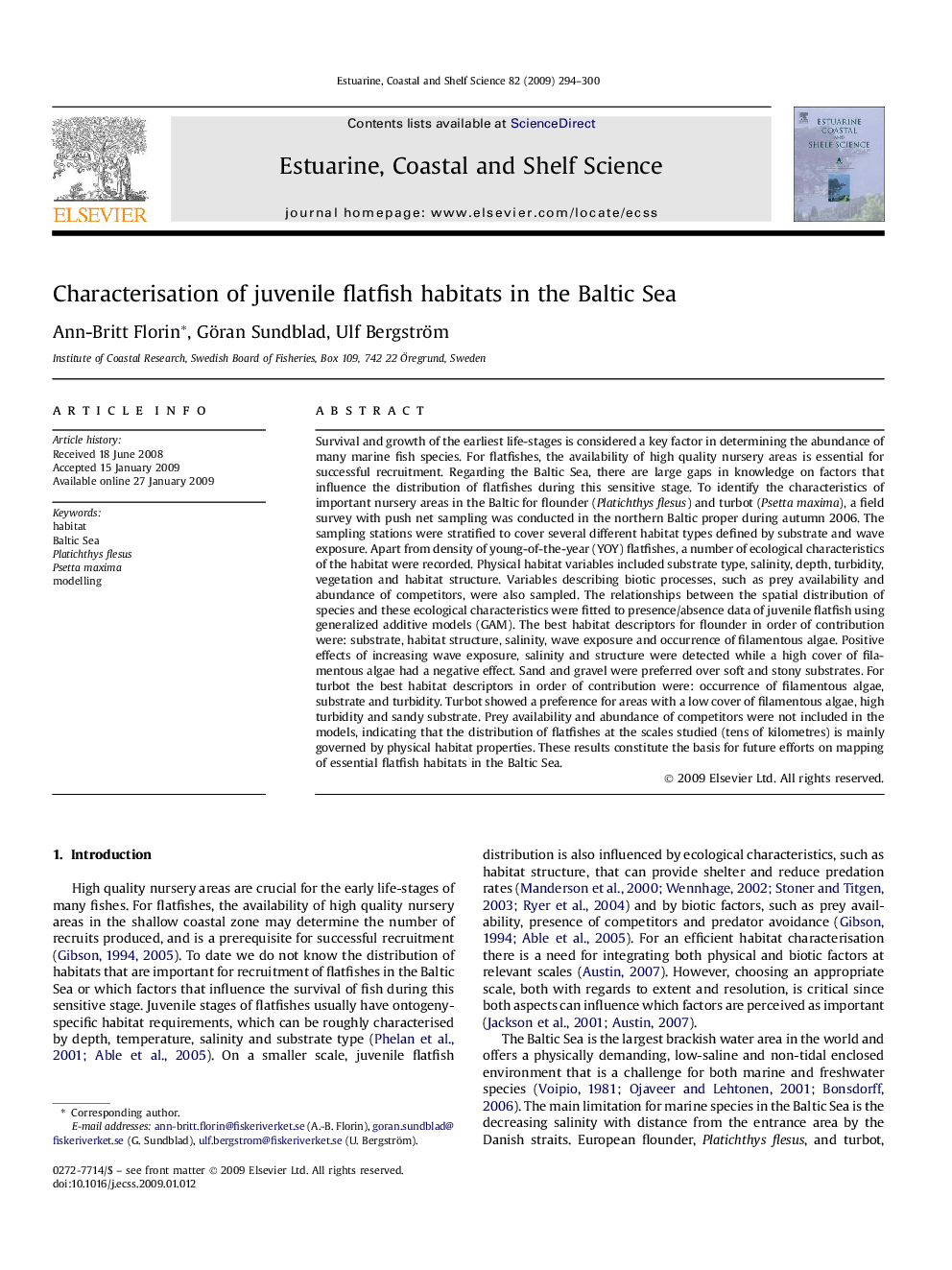| کد مقاله | کد نشریه | سال انتشار | مقاله انگلیسی | نسخه تمام متن |
|---|---|---|---|---|
| 4541239 | 1326714 | 2009 | 7 صفحه PDF | دانلود رایگان |

Survival and growth of the earliest life-stages is considered a key factor in determining the abundance of many marine fish species. For flatfishes, the availability of high quality nursery areas is essential for successful recruitment. Regarding the Baltic Sea, there are large gaps in knowledge on factors that influence the distribution of flatfishes during this sensitive stage. To identify the characteristics of important nursery areas in the Baltic for flounder (Platichthys flesus) and turbot (Psetta maxima), a field survey with push net sampling was conducted in the northern Baltic proper during autumn 2006. The sampling stations were stratified to cover several different habitat types defined by substrate and wave exposure. Apart from density of young-of-the-year (YOY) flatfishes, a number of ecological characteristics of the habitat were recorded. Physical habitat variables included substrate type, salinity, depth, turbidity, vegetation and habitat structure. Variables describing biotic processes, such as prey availability and abundance of competitors, were also sampled. The relationships between the spatial distribution of species and these ecological characteristics were fitted to presence/absence data of juvenile flatfish using generalized additive models (GAM). The best habitat descriptors for flounder in order of contribution were: substrate, habitat structure, salinity, wave exposure and occurrence of filamentous algae. Positive effects of increasing wave exposure, salinity and structure were detected while a high cover of filamentous algae had a negative effect. Sand and gravel were preferred over soft and stony substrates. For turbot the best habitat descriptors in order of contribution were: occurrence of filamentous algae, substrate and turbidity. Turbot showed a preference for areas with a low cover of filamentous algae, high turbidity and sandy substrate. Prey availability and abundance of competitors were not included in the models, indicating that the distribution of flatfishes at the scales studied (tens of kilometres) is mainly governed by physical habitat properties. These results constitute the basis for future efforts on mapping of essential flatfish habitats in the Baltic Sea.
Journal: Estuarine, Coastal and Shelf Science - Volume 82, Issue 2, 10 April 2009, Pages 294–300